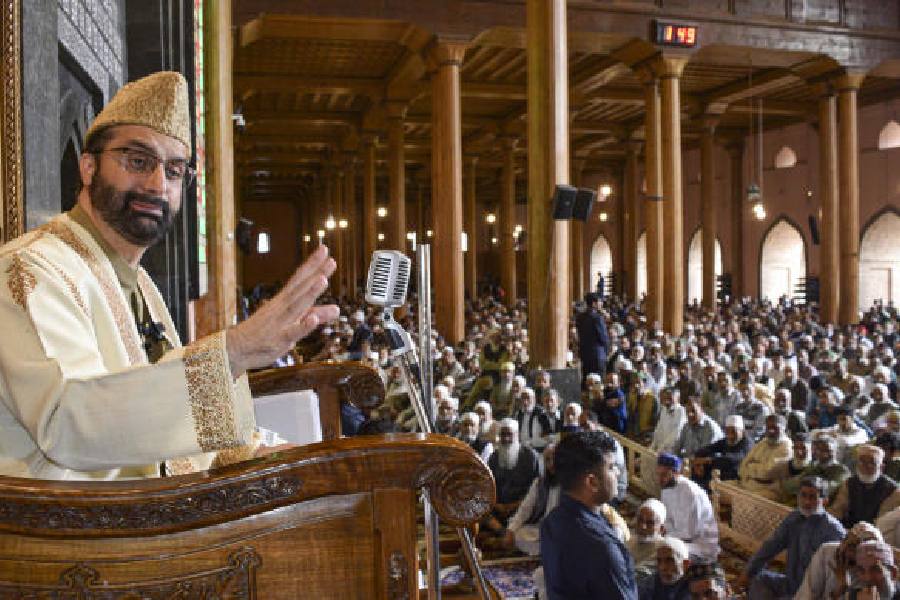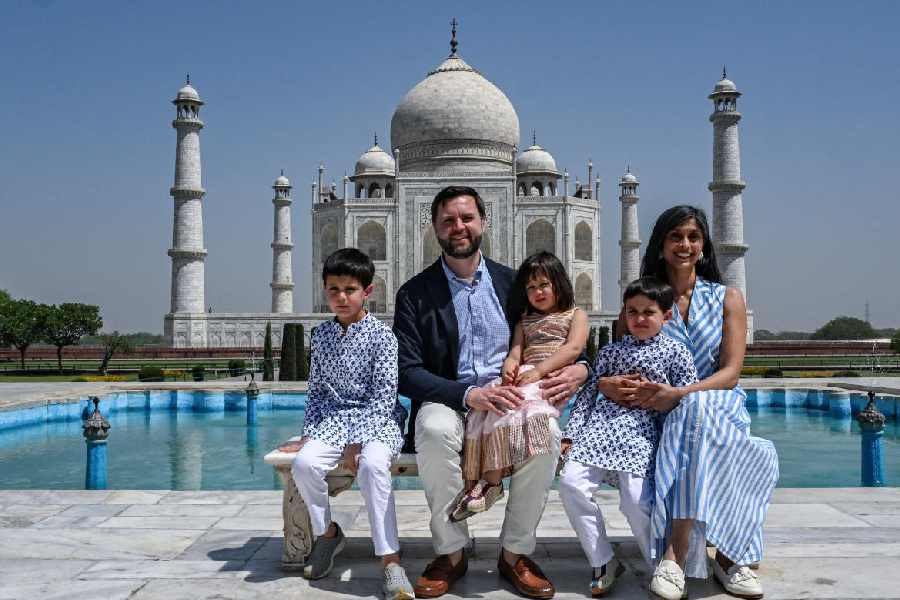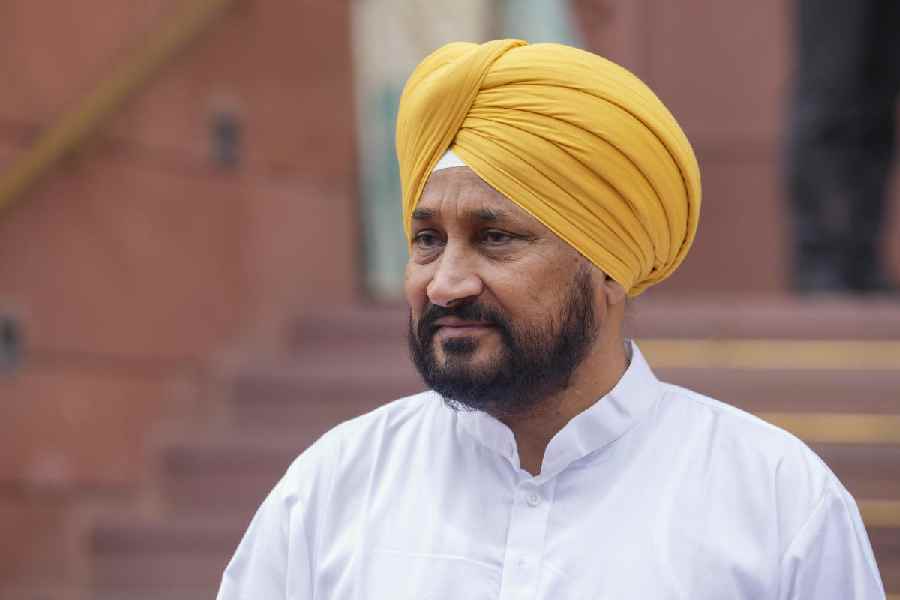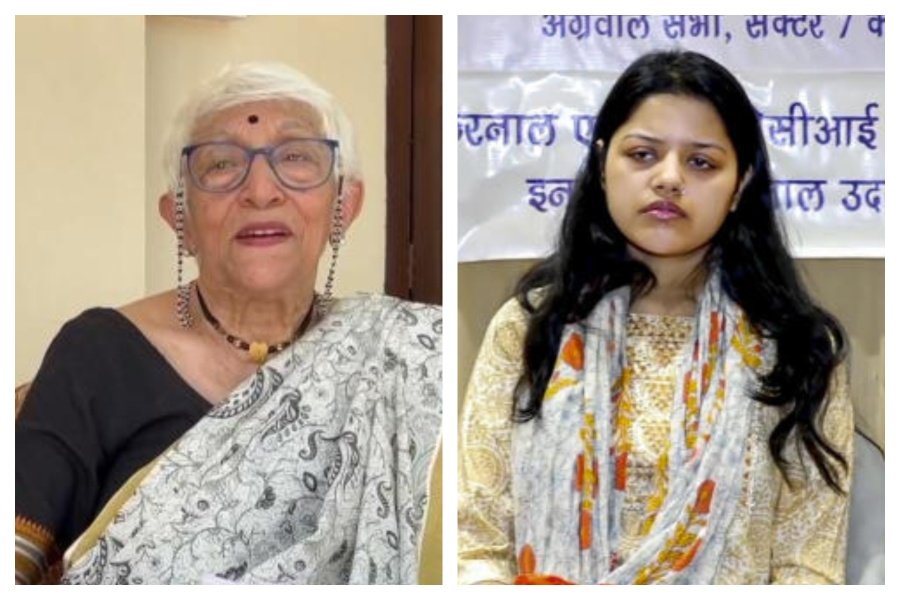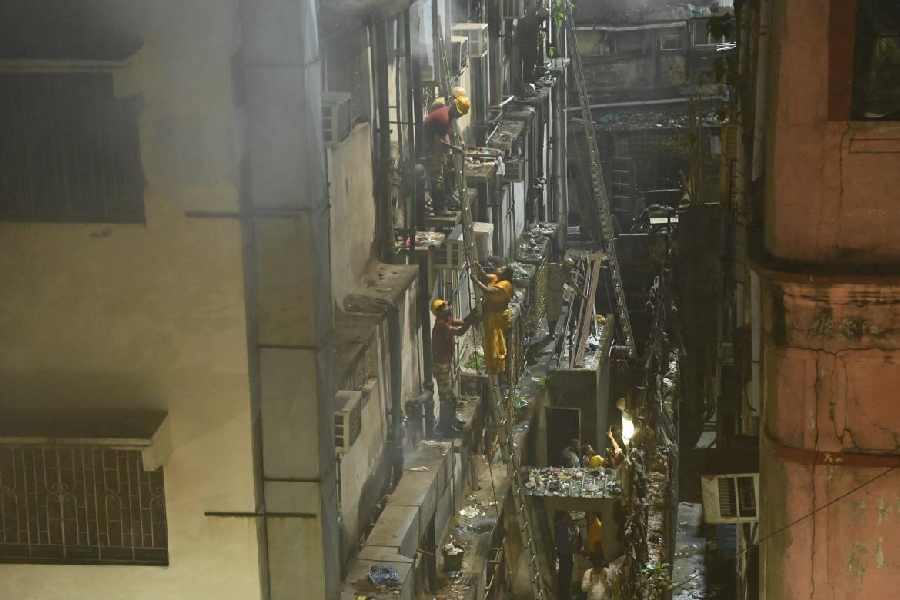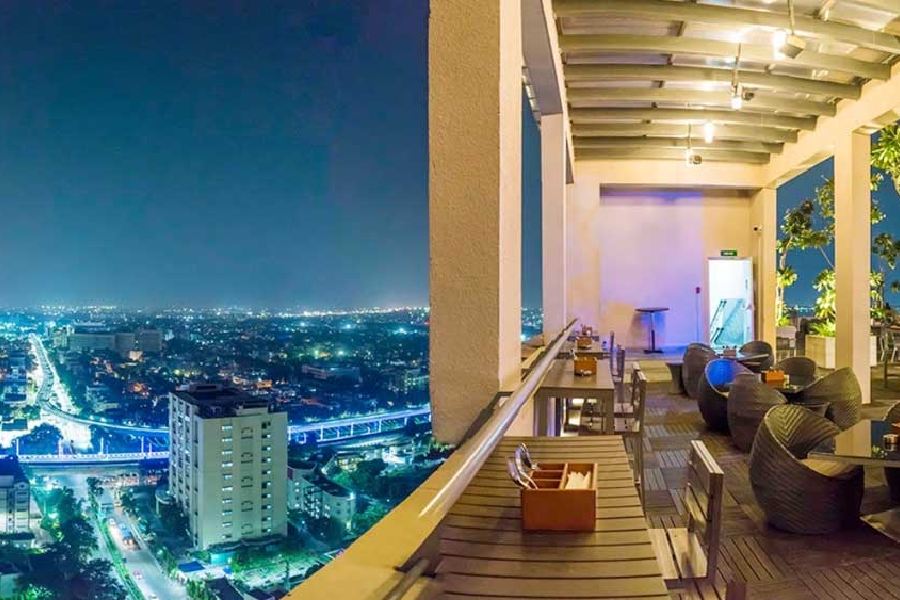 |
| Rebakanta Mahanta with his creations. Picture by Biju Boro |
Guwahati, March 7: Sitting in a corner of the room, 68-year-old Rebakanta Mahanta looked lost as people fawned on Assam Governor Lt. Gen (retd) S.K. Sinha and his West Bengal counterpart Viren J. Shah.
But the man behind the exquisite Sattriya masks that adorn Purbajyoti Museum at the Sankardev Kalakshetra here is used to getting less than the recognition he deserves.
Eighty of Mahanta’s creations were put up at the new gallery of masks that was inaugurated today. But the craftsman, whose roots lie in the Khatpaar Satra, was visibly upset at his efforts not being adequately recognised on such an occasion. Mahanta’s masks had been previously displayed on the Assam tableaux at the Republic Day parade in New Delhi this year. “We stayed in New Delhi for 22 days and won the second prize, but no MP or minister from Assam bothered to visit us,” he said. A retired schoolteacher, Mahanta has been upholding a tradition dating back to several generations. He learnt the art of making masks from his father Gopikanta Mahanta, who was the satradhikar (head priest) of Khatpaar Satra.
“I have passed on these skills to my three sons. They are here with me to perform mukha bhaona at the ongoing folk and traditional drama festival,” he said.
Mahanta donated 25 of the 80 masks, including a 12 feet tall sutradhaar, to the gallery in memory of his father, who remains his “source of inspiration”. The Sankardev Kalakshetra paid him for the rest of the masks. However, his application for pension under the scheme for artistes has yet to be approved.
Impressed by Mahanta’s craftsmanship, the cultural director of the American consulate had visited him early this year and bought seven masks.
However, the artist foresees a bleak future for mask-makers.
“Times have changed. We used to paint masks with natural vegetable dyes till about 15 years ago. We now use artificial paints and colours. But the other materials are the same — bamboo, mud, cow-dung, cloth and jute.”
The new gallery at Sankardev Kalakshetra displays 145 objects of art, including masks, traditional musical instruments and clay models. It covers an area of 3,500 square feet. A conservation laboratory has been set up by the Calcutta-based Indian Museum in the same premises.
S. Chakraborty, director of the Indian Museum, said, “The Sattriya masks displayed here are part of the legacy of a 500-year-old culture. Such masks had been first painted by Srimanta Sankardev to enact stories from the Ramayan, Mahabharat and Bhagvad Puran. We collected the masks during field studies at Khatpaar Satra and took some to the Indian Museum.”
Mahanta appreciated the efforts of the Sankardev Kalakshetra authorities to preserve the art of making masks. “Nobody had previously thought of preserving this dying art form. Nobody bothered to visit our place and see the constraints under which we work,” he said.


